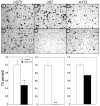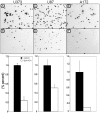1'-Acetoxychavicol acetate promotes caspase 3-activated glioblastoma cell death by overcoming enhanced cytokine expression
- PMID: 23833677
- PMCID: PMC3700938
- DOI: 10.3892/ol.2013.1292
1'-Acetoxychavicol acetate promotes caspase 3-activated glioblastoma cell death by overcoming enhanced cytokine expression
Abstract
The brain consumes ∼20% of the oxygen utilized in the human body, meaning that brain tumors are vulnerable to paradoxical physiological effects from free radical generation. In the present study, 1'-acetoxychavicol acetate (ACA), a naturally derived antioxidant that inhibits xanthine oxidase, was evaluated for its role as an anti-tumorigenic agent in glioblastomas. The study revealed that ACA inhibited glioblastoma cell proliferation as a consequence of promoting apoptotic cell death by enhancing caspase 3 activity. It was also shown that ACA impaired the migratory ability of glioblastoma cells by decreasing their adhesive properties. Additionally, ACA increased the protein expression levels of the pro-survival signaling cytokines, IL-6 and IL-1α, established cell protectors and survival molecules in brain tumors. Together, these results demonstrate that, despite enhanced expression of compensatory signaling molecules that contribute to tumor cell survival, ACA is an effective pro-apoptotic inducing agent in glioblastomas.
Keywords: acetoxychavichol acetate; caspase 3; cytokines; glioblastomas.
Figures







References
-
- Valko M, Rhodes CJ, Moncol J, Izakovic M, Mazur M. Free radicals, metals and antioxidants in oxidative stress-induced cancer. Chem Biol Interact. 2006;160:1–40. - PubMed
-
- Wang J, Yi J. Cancer cell killing via ROS: to increase or decrease, that is the question. Cancer Biol Ther. 2008;7:1875–1884. - PubMed
-
- Cabello CM, Bair WB, III, Wondrak GT. Experimental therapeutics: targeting the redox Achilles heel of cancer. Curr Opin Investig Drugs. 2007;8:1022–1037. - PubMed
-
- Fang J, Seki T, Maeda H. Therapeutic strategies by modulating oxygen stress in cancer and inflammation. Adv Drug Deliv Rev. 2009;61:290–302. - PubMed
LinkOut - more resources
Full Text Sources
Other Literature Sources
Research Materials
